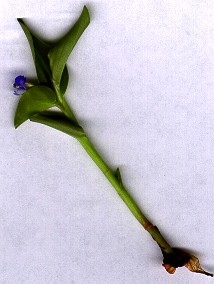
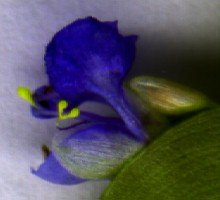


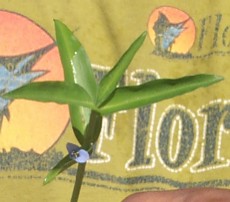
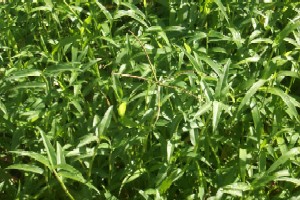
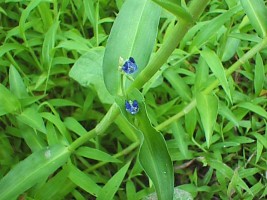
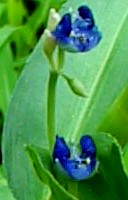
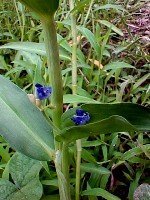
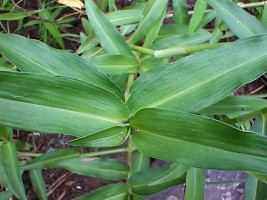
Location collected: Paies, Palikir
Date collected: November 28,1999
Collected by: Harry Saul
Synonym: Commelina nudiflora
Alternate identification: Commelina diffusa f. Rapholophora vitiensis
Burm. f.
1. Genus Species- Commelina diffusa
2. Family- Commelinaceae (Spiderwort Family)
3. English name- Commelina, dayflower
4. Chuukese name-pwa
5. Kosraean name- [maa, but maa means "grass"]
6. Pohnpeian name - Rehn kasoarahn
7. Yapese name-Kamakahr
8. Growth form- Annual erect to decumbent herb.
9. Growth location- Aquatic
10. Growth environment- Savannah
11. Growth zone- Tropical
12. Average height- 40cm long
13. Stem- up 40cm long, glabrous, rooting at the nodes.
14. Leaf arrangement- Alternate, simple, blade lanceolate, 3-10x 1-5cm, acute to acuminate
at the apex, rounded to cuneate at the base, sheath 1-2.8 cm long, ciliate on the upper
edge.
15. Stipule-absent
16. Petioles- 1cm
17. Leaf blade- blade lanceolate, subssessile leaves with parallel veins, strongly nerved
leaf sheaths around the stem
18. Inflorescence- A few flowered cyme opposite a leaf, enclosed or protruding from a
cordate.
19. Floral bracts- absent
20. Flower- 3 blue petal flowers on one branch
21. Calyx- of 3 lanceolate to ovate, unequal sepals 2-5mm long.
22. Corolla- 3 unequal blue petals 5-9 mm long, upper 2 reniform, lower one ovate,
smaller.
23. Stamen- Stamen 3, staminodes 3, free.
24. Ovary- Ovary superior,
25. Style- 3 celled
26. Fruits- an ovoid capsule 6-10 mm long, enclosed within the spathe.
27. Seed- containing 5 pitted seeds.
28. Anything else- Commmelina diffusa is probably native to tropical Asia, but was an
ancient introduction to the island as far east as Samoa, and a European introduction in
Hawwaii and elsewhere. It is occasional to locally abundant in relatively wet, disturbed
places, such as taro patches, roadside ditches, and disturbedforest, at up to 1200m
elevation, especially in Samoa. It can be troublesome weed in wetlandcrops.
29. Cultural usage- Ghost medicine (UHMWU- LAB)!!!
Botany home page
Lee Ling home
COM-FSM home page